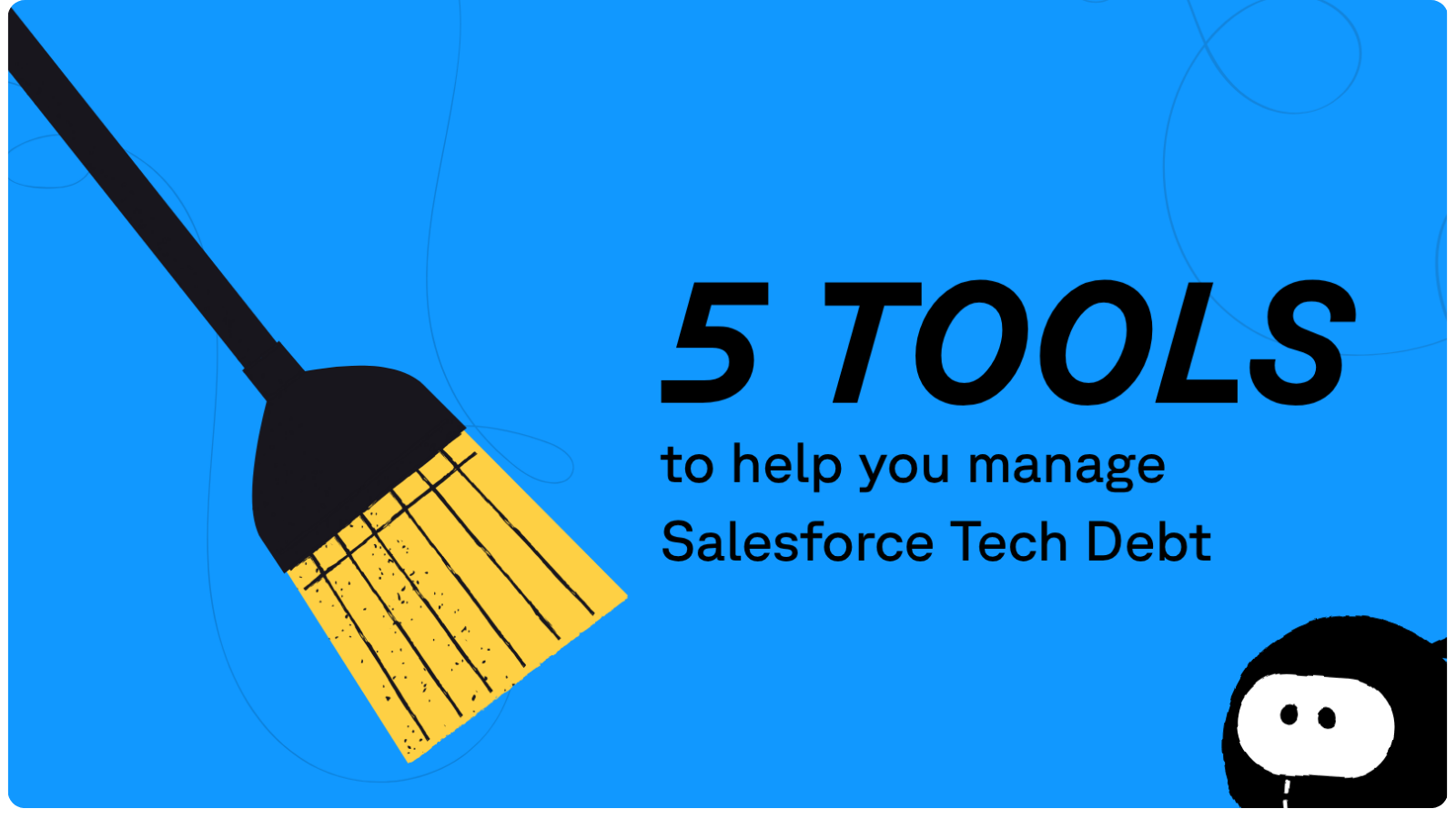Because “move fast” shouldn’t mean “break everything.”
Salesforce is one of the most powerful platforms in the world — flexible, customizable, and built to evolve with your business. But that flexibility comes at a cost.
Every new object, automation, or field you create adds an overabundance complexity. Over time, that complexity becomes technical debt — slowing you down, increasing risk, and making every change feel like tiptoeing through a minefield.
Most teams tolerate it longer than they should. They rely on tribal knowledge, late-night debugging, and manual cleanups that never seem to stick.
But it doesn’t have to be that way. Here are five tools that help you see, manage, and reduce Salesforce tech debt — and what to know before you bring them into your stack.
1. Sweep — Spot and Solve Tech Debt Automatically
If you’ve ever wished for an “x-ray” view of your Salesforce org, Sweep delivers exactly that. Sweep ingests your entire metadata structure — every object, field, automation, and dependency — and turns it into a dynamic, visual map.
You can finally see what’s connected to what, spot redundant or risky automations, and solve root causes of tech debt — safely, confidently, and at scale.
Key capabilities:
- 🔍 Full org visualization: AI-powered maps show every object, flow, and dependency.
- ⚙️ Automated discovery: Identify unused fields, redundant automations, and risky dependencies.
- 🚀 Guided modernization: Tools to support cleanups, migrations, and architecture refactors.
Sweep isn’t just about cleanup — it’s about visibility, control, and long-term resilience.
2. Gearset — Streamline Deployments and Compare Orgs
Gearset is the go-to DevOps platform for Salesforce teams that want to deploy faster and safer. It automates tedious deployment tasks, compares orgs, and detects configuration drift before it becomes a problem.
If you’ve ever lost a weekend to a broken deployment, Gearset can save you hours — and your sanity.
Key capabilities:
- Compare org metadata to detect drift.
- Deploy changes with rollback safety nets.
- Automate CI/CD pipelines for metadata and data.
Trade-offs: Gearset excels at moving changes safely — but it doesn’t help much with understanding what you’re changing. It assumes you already know what’s worth deploying, not whether the underlying structure has hidden complexity. It’s a deployment accelerator, not a visibility tool.
3. Elements.cloud — Map Processes and Metadata Dependencies
Elements.cloud bridges the gap between business processes and the Salesforce configuration that supports them. It’s great for documentation-heavy environments — especially where compliance or auditability matter.
Key capabilities:
- Process maps linked directly to metadata.
- Change tracking and documentation for audit readiness.
- Impact analysis for safer configuration changes.
Trade-offs: Elements.cloud shines when paired with disciplined documentation practices — but that’s also the catch. Its value depends on consistent maintenance. Without a process owner or regular updates, your documentation can lag behind reality, turning insight into illusion.
4. OwnBackup — Protect Your Data, Protect Your Sanity
Tech debt isn’t just messy — it’s risky. Accidental deletions, misfired automations, and failed deployments can compromise critical data. OwnBackup is your safety net: automated backups for Salesforce data and metadata, so you can recover from mistakes in minutes.
Key capabilities:
- Automated daily backups and restores.
- Sandbox seeding and data comparison.
- Metadata backup and version tracking.
Trade-offs: OwnBackup is essential insurance, but it doesn’t address why your org breaks — only how fast you can recover when it does. It’s reactive protection, not proactive prevention. Still, it’s a must-have if you’re serious about resilience.
5. Sonar — Stay Ahead of Change Risk
Sonar helps Salesforce admins and developers understand the downstream effects of any change before they make it. By visualizing dependencies and surfacing impact reports, Sonar reduces the risk of unintentional breakage and helps you make safer edits.
Key capabilities:
- Impact analysis across metadata dependencies.
- Change intelligence dashboards for admins and builders.
- Alerts for risky or high-impact changes.
Trade-offs: Sonar is strong at change intelligence, but less focused on historical cleanup. It’s a “don’t-make-it-worse” tool — great for ongoing governance, but it won’t untangle deep legacy complexity on its own.
To Sweep things up...
Every Salesforce org collects tech debt — it’s inevitable. The question isn’t whether you have it, but whether you can see it, manage it, and prevent it from growing.
These tools complement each other:
- Sweep helps you see and solve tech debt.
- Gearset helps you deploy safely.
- Elements.cloud helps you document what’s there.
- OwnBackup helps you protect what matters.
- Sonar helps you stay ahead of future risks.
Together, they turn Salesforce from a source of friction into a platform of confidence.
Because moving fast is only an advantage when you can do it safely.

